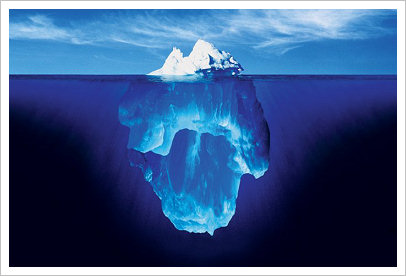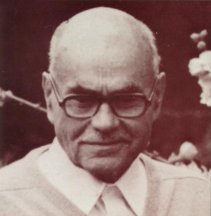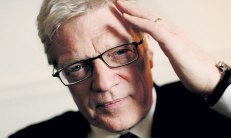Lead Like a River: Five Essential Elements of Purposeful Leadership
Instead of leading like generals that rally the troops, what if we lead like rivers that nourish and contribute to the lands we move through.
We stand at a very exciting time in the history of humanity
I believe we stand on the edge of a paradigm shift in how we drive our human development forward. Signs of this can be witnessed in the types of leaders we need to lead the organisations we work within. Certain styles of leadership are becoming less and less influential and new types of leaders are being called upon. A recent article by HBR summarises how ‘command and control’ styles of leadership are being overtaken by more creative and collaborative leadership styles. This means that leaders don’t necessarily need to sit on top of a pyramid of people but can be an interconnected part of the organisational system. Within this system, leadership is no longer about followership, leadership is about contribution.
Why are we witnessing this shift?
Part of this of course is that as technologies become more advanced, our world becomes more interconnected and organisational structures become more interconnected, latticed systems – in a way, more organic. But also, as we develop, so do our needs. Think of Maslow’s famous hierarchy of needs – as we have more choice about how and where we work, the organisations that we work within become more than just a source of security and safety and we look to these environments to meet our higher levels human need for fulfilment.
Turning back to nature
Although we might imagine that our own leadership patterns are more sophisticated than those of the natural world, there are profound lessons to be learnt from taking a closer look at nature. It is my belief that nature can be our guide. It gives you insights into what’s important, what needs to change, and it offers the tools to move you forward on a path that is deeply fulfilling. The landscape outside can mirror the landscape within and nature provides a powerful catalyst to uncover the deeply hidden traits, abilities, and personal values that become your unique contribution as a leader. Immersing ourselves in the outer natural world allows for the discovery and reflexion of our own inner, natural world. In other words, the external natural world teaches us about, and helps us understand, our personal, inner nature. By accessing the power of the grand metaphors offered up by nature, each one of us has the potential to uncover our contribution and how this can become the source of our true potential.
There are Five Essential Elements to a more Purposeful Leadership. These exist within the mind, body and spirit of every person who wants to do. Purposeful Leaders know their inner gift and how that can support the betterment of people and our planet. They understand that their contribution is a gift to the world. Purposeful Leadership is a state of being that informs our doing – where the leader allows the reason why they lead to influence how they lead and not the other way around. The river can serve us well as the grand metaphor for Purposeful Leadership.
Lead Like a River: Five Essential Elements of Purposeful Leadership
Direction
Think of a river’s intuitive sense of direction, guiding it through different terrains. Even as it winds its way down the mountain, starting as a trickle and splitting into smaller streams, a river may branch out in many different pathways only to find it growing in strength later and following in a unified direction. When, on the surface your direction is unclear, search deep to find the answer. Carl Jung said: “Who looks outside, dreams; who looks inside, awakes.”[1]
Determination
A river has powerful resilience, strength and determination. It is unyielding in following the direction it has chosen, yet shy and effortless in covering distance, trickling over pebbles and mighty rocks alike. A river is forceful yet humble in its approach, delicately gathering strength from its source and determinedly making its way toward its chosen destination.
Unlike motivation that’s gained from external sources, determination comes from deep inside. For the leader it entails diving into your own self-awareness and knowing what’s of fundamental importance to you, knowing what you stand for, where you need to go and why you want to go there.
Flow
Imagine a river’s flow, sometimes slow and steady, sometimes rapid and with great force. Rivers possess an unknown, mysterious energy that allows them to move gracefully and unfailingly toward their destination. A river flows steadily and consistently, regardless of whether it is part of a slow trickle or a roaring waterfall.
How does your energy flow through you? Learning to know when to go with the flow and when to branch out onto different pathways can take courage – the courage to listen deep and trust your instinct.
Collaboration
Picture how a river collaborates with its environment, adapting and creating new pathways. When the storms come and the river breaks its banks, it can destroy the environment it flows though. When the river is at its most supportive and productive, it works with its surroundings, negotiating, adapting and making creative adjustments to its course.
Contribution
Visualise the river’s essential contribution to the environments it passes through, nurturing, enabling growth and productivity. It is the element of contribution that transforms a leader from good to great, to lead on purpose and make a significant contribution to the lives of people and the planet.
Contribution is the essential element of leadership. It answers the question, why do I lead? The purpose of leadership is to contribute to people’s lives and the planet we live on. As a leader, knowing your contribution – actual and potential – is both the source of your power and your inspiration. The more aware you become of your contribution to this world, the greater your capacity to contribute becomes.
Conclusion: What if you could lead like a river?
These five elements exist within a wider universe influenced by the natural rhythm of this world we live in. As Carl Jung wrote, two different energies of introversion and extroversion. Another way to consider this is through the metaphors of the moon as reflection and the sun as creation. Reflection and creation are integral parts to a more Purposeful Leadership and it is these two forces working hand in hand that enable the five earthly elements to flow.
“Your influence begins with you and
ripples outward. So be sure that your
influence is both potent and wholesome.”
– The Tao of Leadership
That’s why Trebbe Johnson and I created Lead Like a River, the eight-day leadership program that combines contemporary leadership practice with ancient nature based techniques. It’s an inward journey for individuals looking for a transformational shift in their lives, for individuals who are aware they are capable of more; aware of their potential but do not know where and how to apply it yet. It takes courage to engage with our purposeful self and to make a commitment to use this as the source of our potency and power in the world. Lead Like a River is the opportunity to answer this call to adventure.
[1] Carl Jung in “Quotations Relevant to Psychotherapy” From the Selected Works of Timothy Thomason, January 2007, p. 20, last accessed 28.09.2012. http://works.bepress.com/cgi/viewcontent.cgi?article=1049&context=timothy_thomason&sei-redir=1&referer=http%3A%2F%2Fscholar.google.co.uk%2Fscholar%3Fstart%3D10%26q%3DWho%2Blooks%2Boutside%2C%2Bdreams%253B%2Bwho%2Blooks%2Binside%2C%2Bawakes%26hl%3Den%26as_sdt%3D0%2C5#search=%22Who%20looks%20outside%2C%20dreams%3B%20who%20looks%20inside%2C%20awakes%22

















